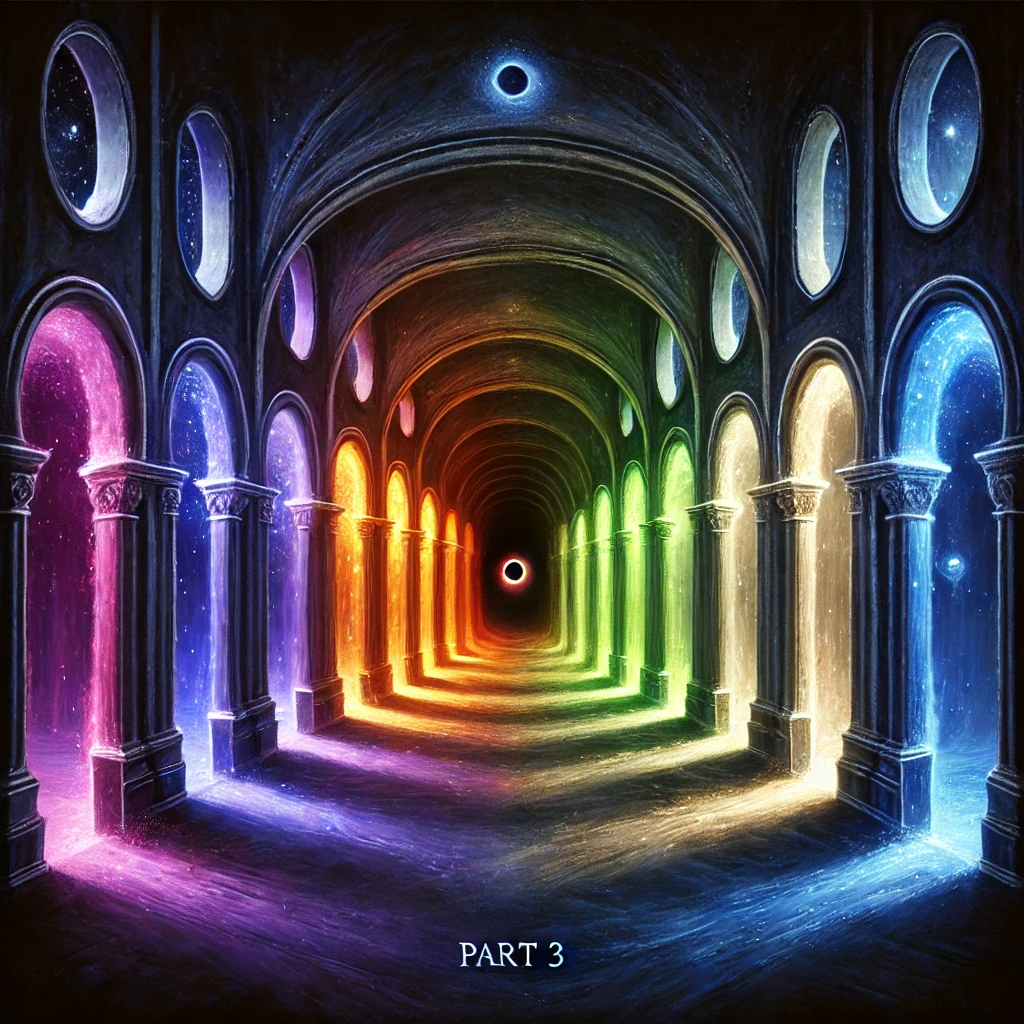To enter the black room is to confront the shadow self, to face mortality, and to embrace the truth that life and death are not opposites but two sides of the same coin.

One of the most striking elements of Edgar Allan Poe’s The Masque of the Red Death is the series of seven rooms where the masquerade takes place. Each room, distinct in its color and atmosphere, can be interpreted as a step along the path of inner transformation. From the first blue room in the east to the final black room in the west, these spaces symbolize the journey of consciousness—a journey through the stages of life, awakening, and eventual integration.
The progression of the seven rooms is often seen as a metaphor for the stages of life, beginning with birth (the blue room) and culminating in death (the black room). From a spiritual perspective, this sequence also reflects the soul’s journey through different levels of awareness, from the initial spark of awakening to the full integration of shadow and light. Each room’s color offers a clue to its symbolic meaning:
- Blue: The beginning of awareness, symbolizing birth, potential, and the infinite possibilities of the soul.
- Purple: The awakening of intuition and the connection to higher consciousness, often associated with royalty and spiritual wisdom.
- Green: The heart’s domain, representing growth, balance, and the emergence of love and compassion.
- Orange: Creativity, vitality, and the courage to express one’s true self.
- White: Purity and the illumination of truth, a space where clarity begins to shine.
- Violet: Integration of the higher self, marking the deepening of spiritual connection and mastery.
- Black: The threshold, representing the confrontation with mortality, the shadow, and the ultimate truth of existence.
Movement from East to West
The arrangement of the rooms, from east to west, mirrors the trajectory of the sun and the cycle of life itself. The easternmost room—the blue room—represents beginnings, while the westernmost room—the black room—symbolizes endings and transformation. This progression reflects the Gnostic understanding of life as a journey of forgetting and remembering, of moving from separation to unity.
From my perspective, the path through these rooms can also represent the process of awakening. Each step challenges us to confront and integrate new aspects of ourselves. The journey is not linear; rather, it is a spiral, with each room offering an opportunity for deeper exploration and understanding. The final room, shrouded in black velvet and illuminated by blood-red light, is the ultimate test. It is where we must face the shadow and embrace the wholeness of who we are.
The Black Room: A Space of Revelation
The black room stands apart from the others, both in its atmosphere and its significance. Shrouded in heavy black velvet and illuminated by scarlet-tinted windows, this room evokes both fear and fascination. It is here that the Red Death appears, and it is here that Prospero’s journey—and the journey of his guests—reaches its climax.
In spiritual terms, the black room represents the space where light and dark converge. It is the alchemical crucible where transformation occurs. To enter the black room is to confront the shadow self, to face mortality, and to embrace the truth that life and death are not opposites but two sides of the same coin. This room is not a place of despair but of revelation. It is the threshold where we move beyond illusion and into the reality of our infinite nature.
Reflection: Walking the Seven Rooms
As we consider the symbolism of the seven rooms, we are invited to reflect on our own journey. Which room are we in? What truths are we discovering? And what shadows remain to be embraced? The journey through these rooms is not about reaching a destination but about allowing each moment to reveal its wisdom.
The seven rooms of The Masque of the Red Death remind us that life is a progression, a dance of light and shadow, of beginnings and endings. Each step brings us closer to the truth of who we are. And when we reach the final room, we do so not as fragmented beings but as whole, integrated souls, ready to embrace the fullness of the I AM.
We meet ourselves time and again in a thousand disguises on the path of life.
